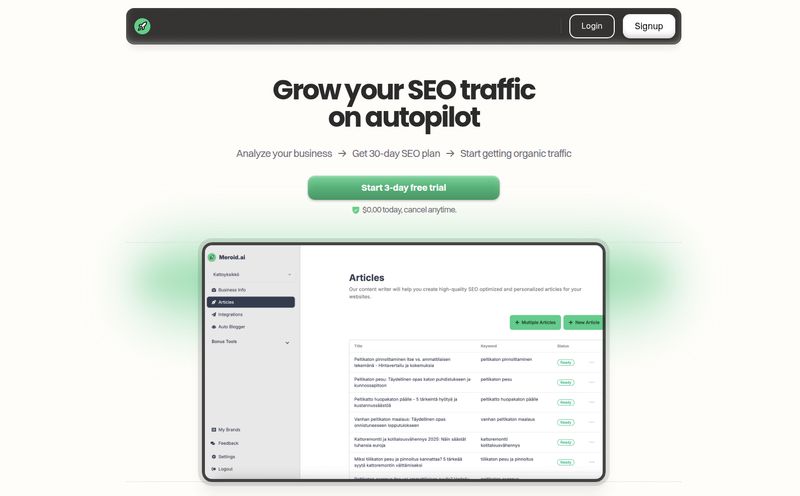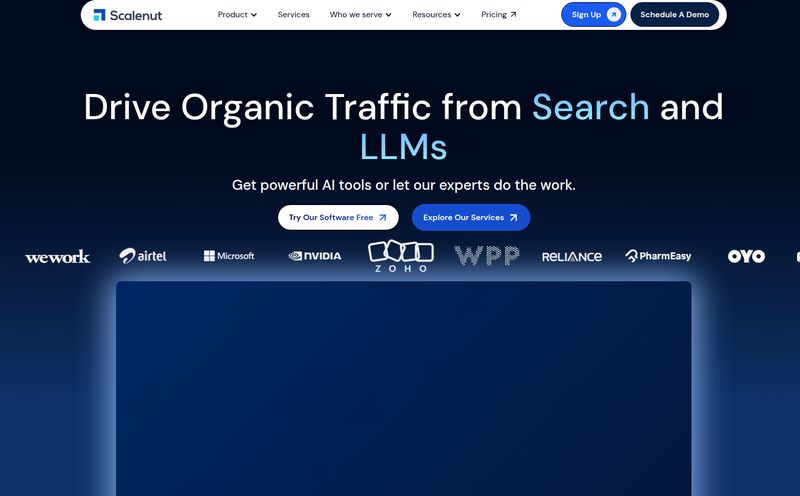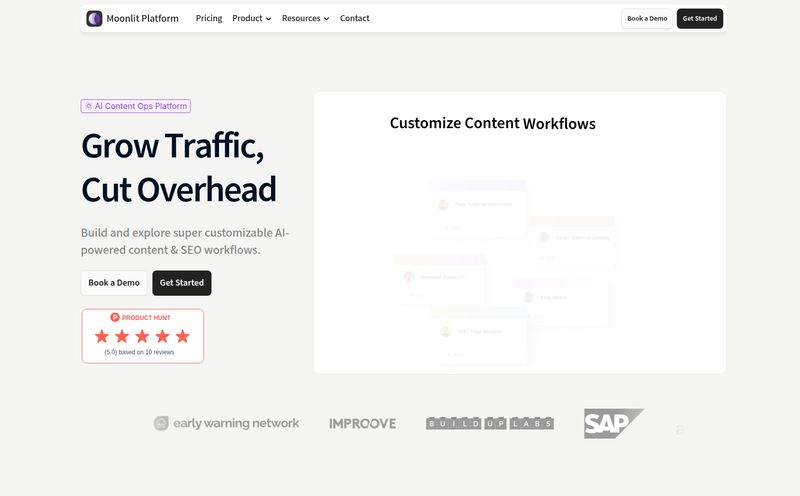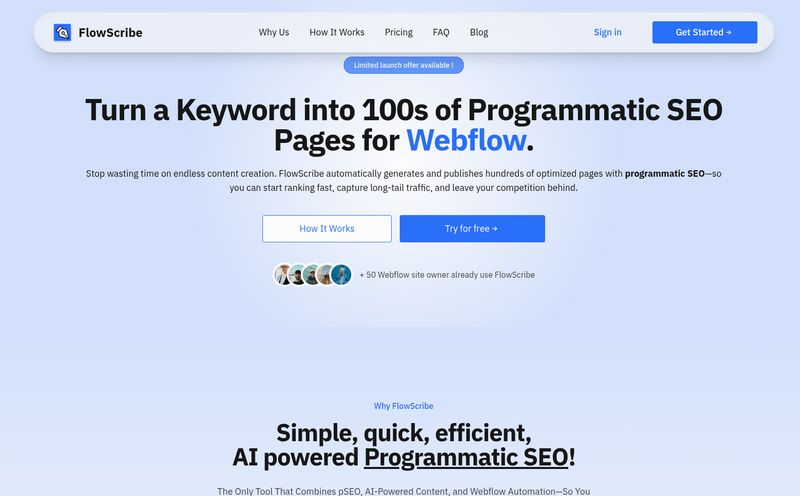We've all been there. Staring at a beautifully crafted, pixel-perfect design in Figma, and it's just… empty. The buttons say "Button," the headlines scream "Headline Text," and every paragraph is a rambling mess of Lorem ipsum dolor sit amet. It’s the design equivalent of a stunning house with no furniture.
For years, I’ve juggled my roles as an SEO and content guy, often parachuting into design files to replace placeholder text. It's a clunky process. The designer has one vision, the copywriter has another, and the SEO (that's me) is trying to make sure Google can actually figure out what the page is about. It's a frustrating, time-sucking dance.
So when I first heard about UIQuill, a so-called “context-aware text tool for Figma,” my skepticism was on high alert. Another AI tool promising to solve all my problems? Sure. But that cute little fox mascot with the glasses got me. I had to give it a shot. And I'm genuinely glad I did.
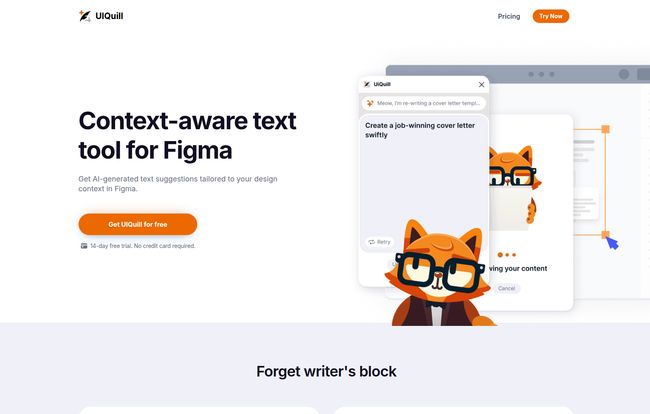
Visit UIQuill
So What is This UIQuill Thing, Anyway?
In a nutshell, UIQuill is a plugin that lives right inside your Figma files. But calling it just a text generator is a bit of an undersell. It’s more like having a tiny, incredibly fast copywriter sitting on your shoulder, ready to fill in the blanks.
The magic word here is context-aware. Unlike some AI writers where you type in a generic prompt and get a generic paragraph back, UIQuill actually looks at your design. It analyzes the component you've selected—whether it's a tiny button, a user card, or an entire hero section—and generates text that actually fits the tone, style, and, most importantly, the space you have available. No more copy that's three lines too long for the box it's supposed to live in. What a concept!
The Features That Genuinely Make My Workflow Better
Okay, let's get into the weeds. A tool is only as good as what it can do, right? Here’s what stood out to me during my time using UIQuill.
That Context-Aware AI is No Joke
This is the main event. You can select a frame in Figma and just ask it to write. For example, I was working on a mockup for a pet adoption website. I selected the hero section, told UIQuill to “Write a compelling headline and sub-headline about adopting a rescue dog,” and boom. It didn't just give me text; it gave me text that fit the character counts I had implicitly set with my design. This feature alone is a massive timesaver. It's the difference between getting a block of text you have to edit down and getting something that's 90% of the way there, instantly.
SEO-Optimized Text Directly in the Design
Okay, my SEO heart is singing. This is huge. One of the biggest disconnects in the web creation process is the gap between design and search optimization. Designers make things look good, and SEOs come in later to crowbar keywords into the H1s and meta descriptions.
“UIQuill has a specific function to generate SEO-optimised text. This means you can build a site mockup that isn't just visually appealing but is also structured for search engines from the ground up. It’s a game-changer for collaborative workflows.”
It helps designers think like marketers without needing years of training. It's about building a better foundation from the very first step, not fixing a broken one before launch.
Unbelievable Flexibility from Micro to Macro
I was impressed by the sheer flexibility of the tool. You’re not locked into generating content for an entire page. Got a single text layer that needs a better call-to-action? Select it and go. Need to populate a whole group of elements, like a pricing table? Highlight the group and let UIQuill work its magic. You can even run it on the whole page to get tailored suggestions everywhere. This scalability means it's useful for both quick fixes and full-scale content population.
The Million-Dollar Question: UIQuill's Pricing
Alright, let's talk turkey. Nothing this useful is ever completely free, right? UIQuill offers a pretty straightforward pricing model, and frankly, it feels quite reasonable for the value it provides.
| Plan | Price | Best For |
|---|---|---|
| Premium | $9 per month | Individuals and teams who want ongoing access to the latest AI models and unlimited usage. |
| Lifetime | $299 one-time payment | Power users, agencies, or anyone who hates subscriptions and wants to lock in a great deal for good. |
My take? The $9/mo is a no-brainer for any freelance designer or small agency. The amount of time it saves on a single project probably pays for the subscription for several months. I mean, what's your hourly rate? It'll save you more than an hour of work a month, I guarantee it.
The $299 lifetime deal is really tempting. If you live and breathe Figma and can see yourself using this for years to come, it’s a fantastic value proposition. Plus, they mention getting early-bird access to new features, which is always a nice perk.
Best of all, there's a 14-day free trial that doesn't even ask for a credit card. So you can literally try everything I've mentioned without any risk.
A Few Realistic Considerations
No tool is perfect, and it's important to be real about it. First, this is a Figma plugin. If you're an Adobe XD or Sketch devotee, you're out of luck for now. Second, while the AI is brilliant, it's still an assistant, not a replacement for a professional copywriter or a human with a good sense of brand voice. You should always give the generated text a final read-through and tweak it to perfectly match your tone. It's a powerful starting point, not a magic “finish project” button.
My Final Verdict, Is UIQuill a Must-Have?
After spending a good amount of time with it, I've moved UIQuill from the “curiosity” folder in my brain to the “essential toolkit” folder. It elegantly solves a problem that has plagued designers and content creators for ages—the painful, slow process of filling designs with meaningful text.
It bridges the gap between design, content, and SEO in a way I haven't seen before. It saves time, reduces friction, and just makes the entire process more… fun. If you work in Figma, you owe it to yourself to at least take the free trial for a spin. You might be surprised at how quickly you can’t imagine your workflow without it.
Frequently Asked Questions about UIQuill
- 1. Does UIQuill completely replace the need for a copywriter?
- Not at all. Think of UIQuill as a copywriter's assistant or a designer's first draft machine. It's fantastic for generating ideas, filling space with relevant text, and overcoming writer's block. However, a human copywriter is still invaluable for fine-tuning brand voice, strategy, and high-level messaging.
- 2. How does the SEO optimization feature actually work?
- The tool uses AI models trained on best practices for on-page SEO. When you ask for SEO-optimized text, it will generate copy that naturally includes relevant keywords and phrasing for things like headlines (H1, H2), meta descriptions, and body text, helping you build a search-friendly structure right from the design phase.
- 3. Is the $299 lifetime deal worth the investment?
- If you're a heavy Figma user, an agency, or a freelancer who constantly works on web and app design, the lifetime deal offers incredible value. If you only use Figma for occasional projects, the $9/mo subscription is likely a more flexible and cost-effective option. You can always start monthly and upgrade later.
- 4. Do I need a powerful computer to run UIQuill?
- Nope! Since UIQuill is a Figma plugin, all the heavy AI processing happens on their servers, not your computer. As long as your machine can run Figma smoothly, you'll have no problem using UIQuill.
- 5. What happens after the 14-day free trial ends?
- After your 14-day trial, you'll need to subscribe to either the monthly or lifetime plan to continue using the premium features. Since no credit card is required to start, you won't be automatically charged.
- 6. Can I use UIQuill for different languages?
- While the primary development focuses on English, modern AI models have strong multilingual capabilities. It's best to test its performance in your desired language during the free trial to see if it meets your standards.
